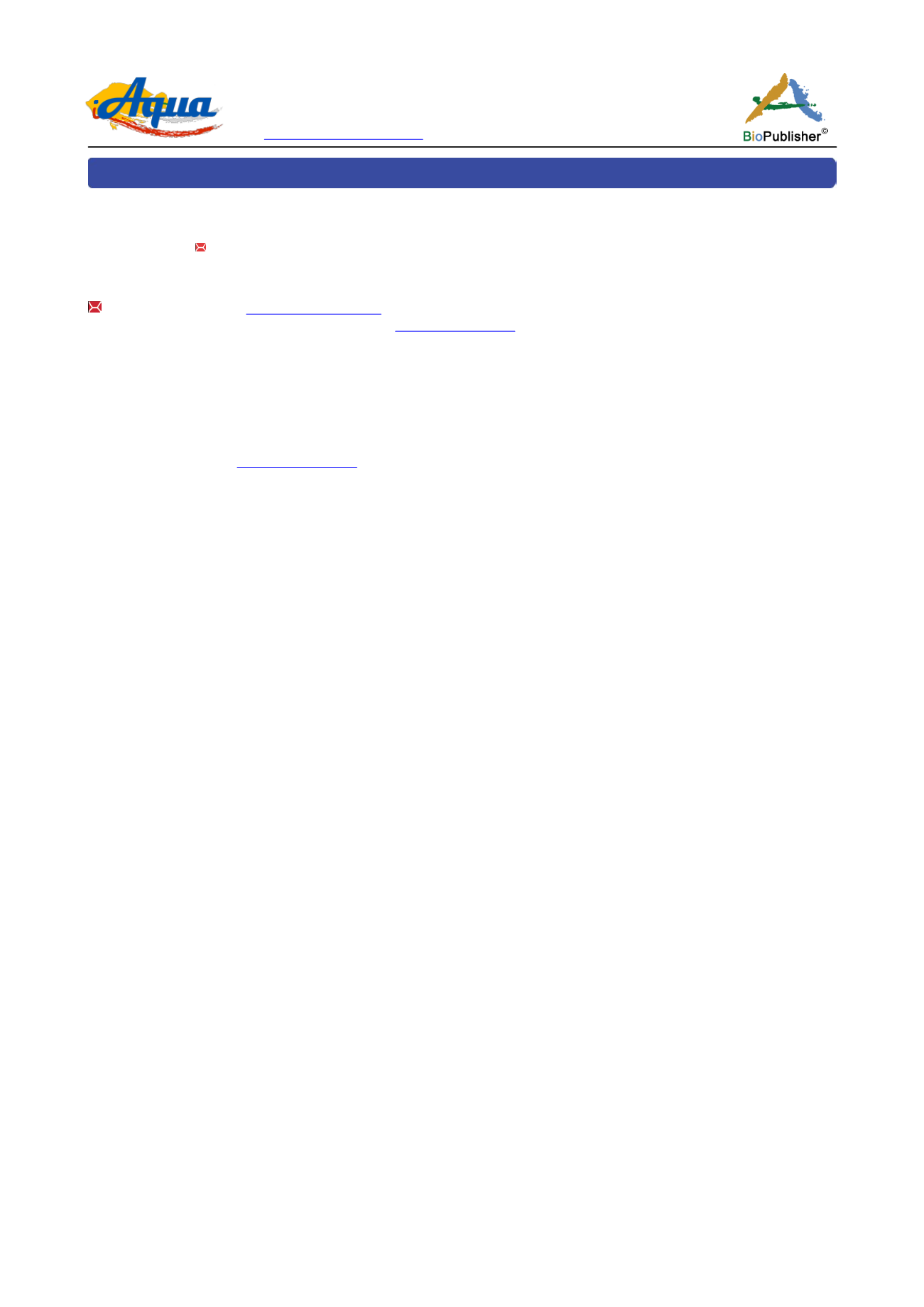
International Journal of Aquaculture, 2016, Vol.6, No.10, 1
-
9
1
Research Article Open Access
Screening of Cellulose - Degrading Bacteria Associated with Gastrointestinal
Tract of Hybrid Abalone as Probiotic Candidates
Muhamad Amin
1, 2
1 Institute for Marine and Antarctic Studies (IMAS), University of Tasmania, Launceston, Tasmania 7250, Australia
2 Fisheries Faculty, University of 45 Mataram, West-Nusa Tenggara, Indonesia
Corresponding author Email
International Journal of Aquaculture, 2016, Vol. 6, No.10 doi
Received: 10 Oct., 2016
Accepted: 8 Nov., 2016
Published: 20 Nov., 2016
Copyright © 2016
Amin et al., This is an open access article published under the terms of the Creative Commons Attribution License, which permits
unrestricted use, distribution, and reproduction in any medium, provided the original work is properly cited.
Preferred citation for this article
:
Amin M., 2016, Screening of cellulose - degrading bacteria associated with gastrointestinal tract of hybrid abalone as probiotic candidates, International Journal
of Aquaculture, 6(10): 1-9 (doi
Abstract
This study aimed at isolation and characterization of cellulose - degrading bacteria from gastrointestinal tracts (GIT) of
hybrid abalone (
Haliotis laevigata
x
H. rubra
) as aquaculture probiotic candidates. The result showed that 7 endosymbiont bacteria
had a capacity to degrade cellulose. Of these, 2 isolates exhibiting the highest cellulolytic activity were isolate C - aw2 and C -1.
Based on their 16S rDNA sequences, these bacterial isolates displayed high similarity to
Stenotrophomonas
sp strain LY -2, and
Bacillus
sp strain WR -2, for isolate C – aw2 and C -1 respectively. Further in vitro characterizations indicated that these bacteria had
a high viability in seawater and simulated GIT environments. In addition, both bacteria were non - toxic to juvenile abalone
determined through an in vivo study. These results suggest that
Stenotrophomonas
sp and
Bacillus
sp could be potential probiotic
candidates, especially to increase digestibility of plant-based aquaculture diets. However, the effect of these bacterial
supplementation on the food digestibility of live aquatic species need to be further investigated.
Keywords
Bacillus
sp; Cellulolytic activity; Probiotic candidates;
Stenotrophomonas
sp
Background
Cellulose is composed of glucose polymers joined together by β-1, 4 glycosidic linkages (O'sullivan, 1997). Due
to the high glucose content and as the world’s most abundant organic materials (Siróand Plackett, 2010), cellulose
is considered as rich and cheap energy sources for some terrestrial animals which are able to produce cellulase
endogenously, a group of enzyme which could break down the β-1, 4 glycosidic linkages and produces glucose
units (Spano et al., 1976). However, several aquatic species are unable to directly utilized cellulose, because they
are unable to produce the cellulase enzyme (Bondi and Spandorf, 1954; Fish, 1960; Stickney and Shumway, 1974;
Li et al., 2009). Therefore, cellulose content in aquaculture diets is frequently associated with adverse effects on
cultivated species (Li et al., 2009). For instance, the use of high cellulose food ingredients such as soybean meal
or microalgae as a replacement of fish meal has been observed to decrease food digestibility (Appler, 1985;
Francis et al., 2001). In addition, high cellulose content in aquaculture feed has been described to increase
intestinal viscosity and reduce digestive-enzyme access to other food ingredients, resulted in lower feed intake and
low growth of aquaculture animals (Francis et al., 2001). It was generally accepted that cellulose could only be
utilized by several terrestrial animals only such as termite (Ohkuma, 2003) and ruminants (Stewart, 1977).
However, a study by Davies (1965) discovered that some bacteria associated with intestinal tracts of cellulose -
utilizing animals, were able to produce cellulase and played significant roles in cellulose degradation. Since then,
numerous studies have been conducted to isolate and investigate cellulose-degrading bacteria for diverse
purposes.
The inclusion of cellulose - degrading bacteria has been documented to increase cellulose digestibility and yield
more metabolizable energy in ruminants (Varel, 1987; Titi and Tabbaa, 2004). The use of beneficial bacteria to
enhance performance of animals is generally known as probiosis. The same approach can be practiced in
aquaculture species especially to aquatic species with lack of cellulolytic activity. The supplementation of
cellulose-degrading bacteria may eliminate the adverse effects of cellulose content in plant-based diets and


